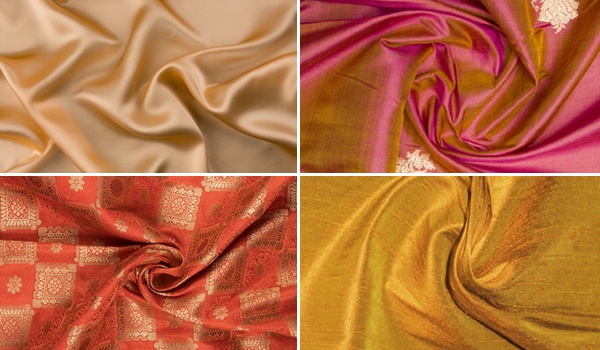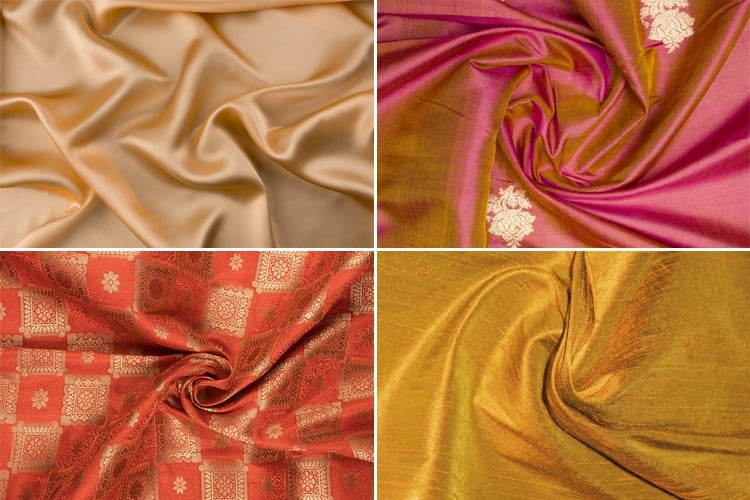
Shopping sprees, I tell you. “More is less” is the best definition. There is no end to anything when it comes to shopping. Now take a look at the garments. There is a wide range of fabric material – cotton, linen, wool, jute, silk, etc. Question is how well informed are we of the types of fabrics we wear. With winters almost here, we think there is only one silk. Lady, you got it wrong! There are many types of silk. In fact, there are different types of silk vying for your attention.
Did you know, Silk was first developed in China in 3630 BC?
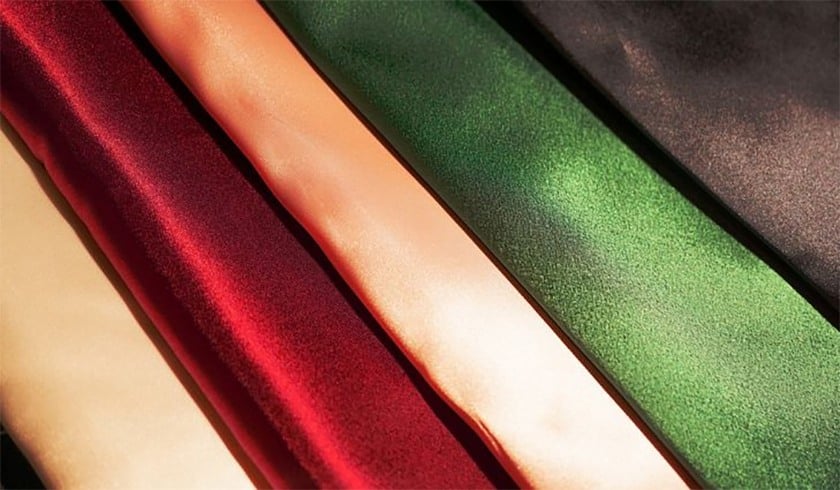
Source: worldatlas.com
The Best part is:
Not only is India the second largest producer of silk after China, our country is also the largest consumer of Silk. That is why silk garments and saris are popular drapes during auspicious occasions and events in India. Silk retains its beauty for years since it is a strong fabric. And the beauty of this garment is that it can be worn in both warm and cold temps.
I think it is worth knowing all about silk now – the types of silk, types of silk fabric and types of silk in India. Let’s go!
Silk fabric is called by different names in India. It is known as ‘Paat’ in East India, “Pattu” in South India and “Resham” in North India.
There are four types of commercially known silk in the world: Mulberry silk (which contributes to 90% silk production in the world) and 3 types of Non-mulberry silks (Eri silk, Muga silk, and India silk). Apart from this, there are other types of non-mulberry silk such as Coan silk, Anaphe silk, Fagara silk, Mussel silk, and Spider silk.
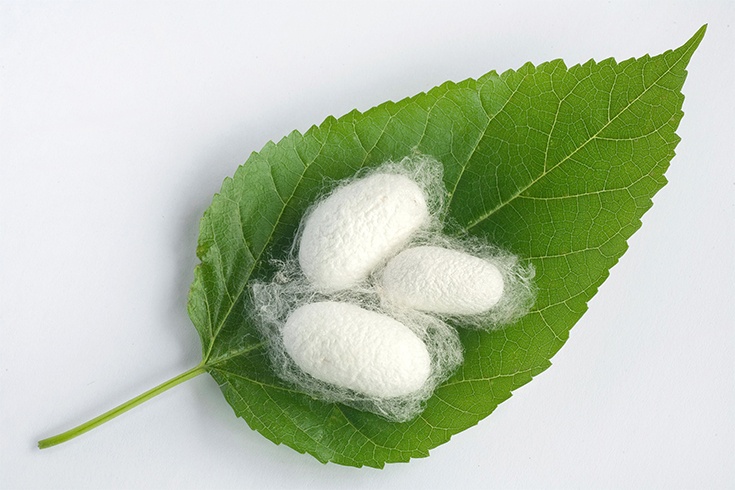
Source: thoughtco.com
Mulberry Silk
Want the finer things in life? Then, Mulberry Silk is your answer.
Across the world, this is one of the most loved types of Silk. It is the key source of bulk production of commercial silk. Mulberry silk comes from the silkworm, Bombyx mori which solely feeds on the leaves of the mulberry plant. These silkworms are reared indoors. Majority of Mulberry Silk is produced in Karnataka, Andhra Pradesh, and Tamil Nadu. The states of West Bengal and J & K come next in mulberry silk production.
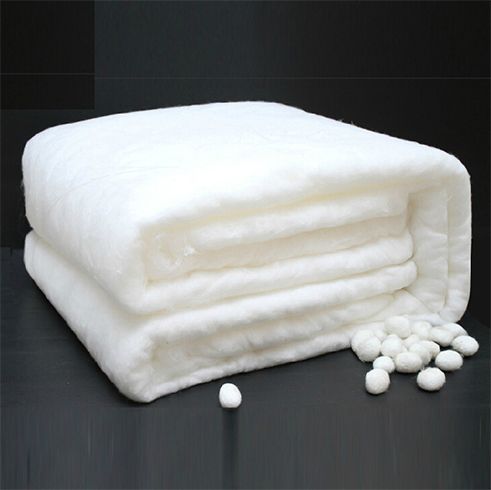
Source: aliexpress.com
Non-Mulberry Silk
Three different types of silk in this category:
India silk: The India silkworms are basically “wild” silkworms. Don’t mistake India (or tussah) to be a bad silk. It’s just that it lacks the consistent quality of a good silk. There are many types of India silkworms worth knowing – there is Chinese India silkworm (producer of the largest quantity of non-mulberry silk in the world), then comes the Indian India silkworm, and then the Japanese India silkworm (peculiar to Japan which produces GREEN SILK THREAD).
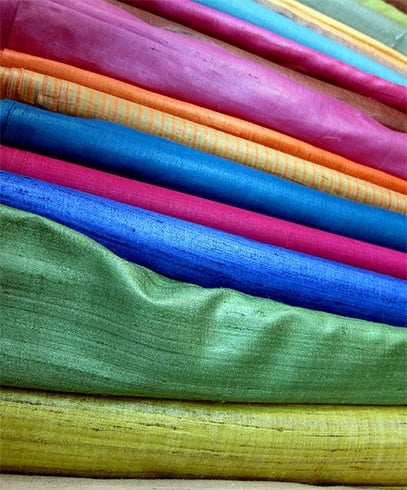
Source: utsavpedia.com
Chinese-Japanese Bhai Bhai because their India silkworms collectively feed on oak leaves.
Guess the states in India where these types of silk fabric are produced more??It is Central India – which includes states like Jharkhand, Bihar, Chhattisgarh, Madhya Pradesh, Maharashtra, Uttar Pradesh, Andhra Pradesh, Orissa, etc.
Point to note –
The quantity of Muga silk produced is low. That is why this silk is used in the making of traditional Assamese dresses.
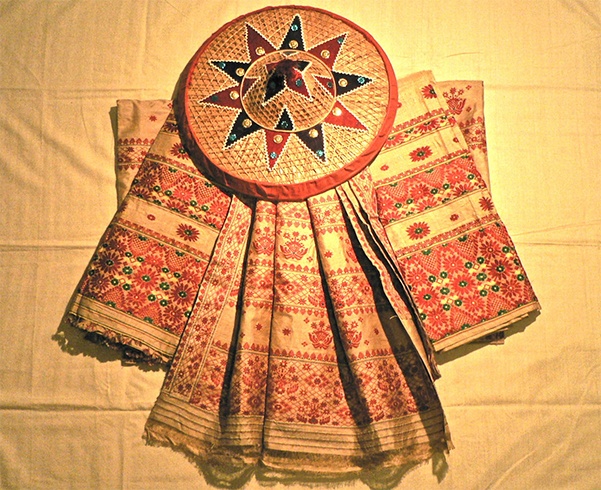
Source: en.wikipedia.org
Jute silk: This is one of the hottest types of silk in India today. It is made from blends of chemically modified jute fiber with natural silk fibers. The best thing about adding jute silk to your wardrobe is that it is inexpensive, breathable and meets all your casual needs.
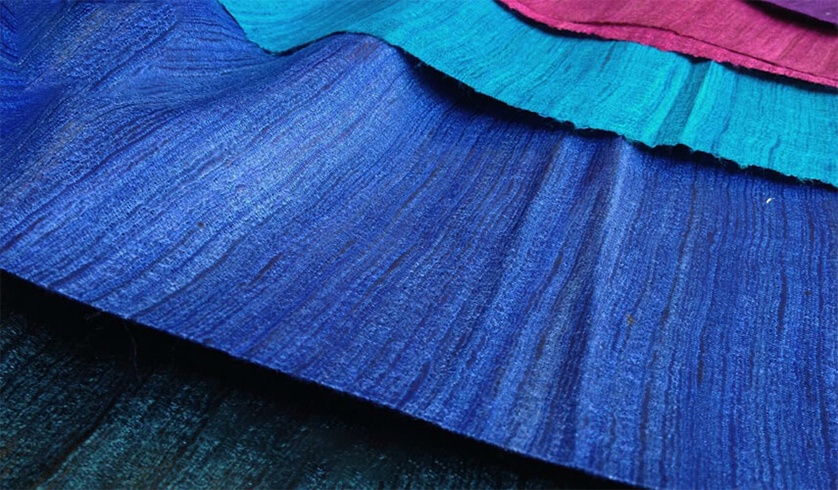
Source: aparnaa.com
Anaphe silk: This is one of the most exotic types of silk as it hails from southern and central Africa. The silk cocoons are in communes, and all of them are enclosed by a thin layer of silk. Anaphe silk is used more in velvet and plush light seat covers.
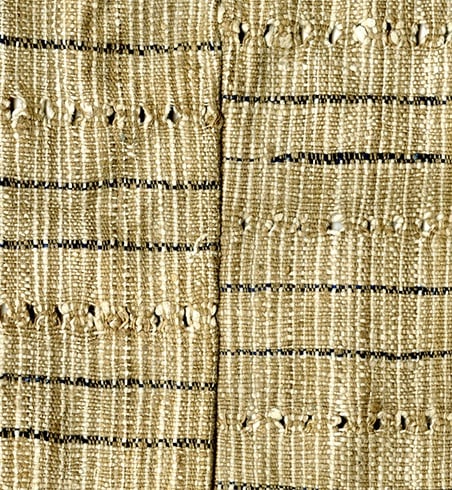
Source: mississippientomologicalmuseum.org.msstate.edu
Fagara silk: This silk is obtained from the giant silk moth inhabiting the Indo-Australian region, China, and Sudan. They spin light-brown cocoons of nearly 6 cm length.
[sc:mediad]
Coan silk: Belonging to the Mediterranean region, the Coan silkworms primarily feed on pine, ash cypress, juniper and oak trees. They spin large white cocoons.
Do you know, in ancient times, the Coan silk was used to make the crimson-dyed apparel worn by the Roman dignitaries?? With time, its commercial production came to a stop due to the emergence of superior varieties of silk and its limited production.
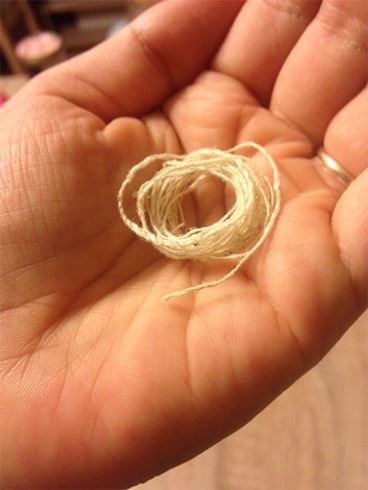
Source: in.pinterest.com/agataapasieczna
Mussel silk: While the non-mulberry silks are of insect origin, the mussel silks (often called the “Sea silk” are found in the shallow waters. The mussels secrete a strong brown filament – the byssus – which is then combed and spun into a silk called the “fish wool”. The production of this silk happens most in Taranto, Italy.
FYI, Mussel silk is one of the most expensive types of silks in the world!
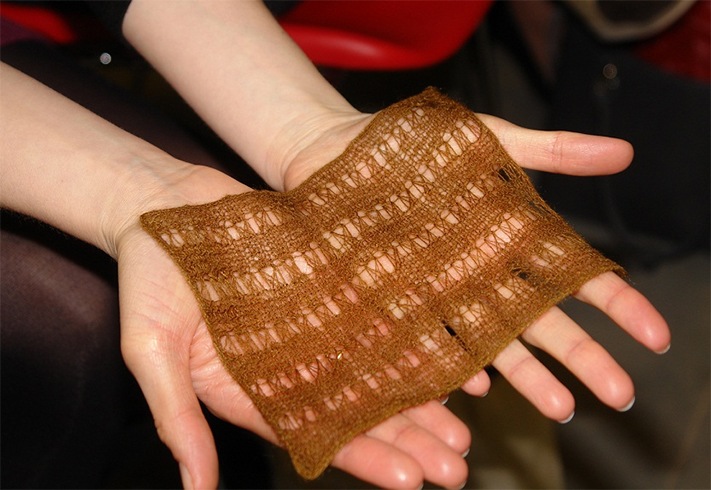
Source: threadfashionandcostume.blogspot.in
Spider silk: Belongs to non-insect silk variety. Soft and fine, strong and elastic, Spider silk is not used much in the textile industry because of its high cost of production. But because of its resistance to extremes in temps and humidity, this is one of the most durable types of silk and is used mostly for crosshairs in the optical industry.
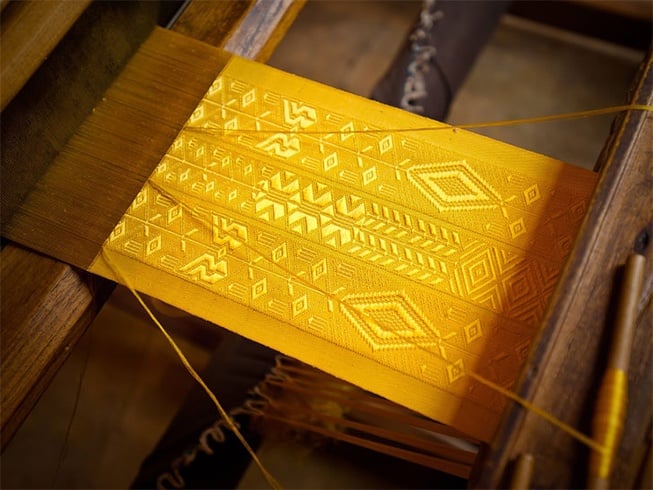
Source: inhabitat.com
Various Types of Silk In India
Aha …Be prepared for some real knowledge and fun. Jot it down the SILK-OPEDIA!
1. Tanchoi Silk: Silk weaving technique – which is a blend of silk from India and China.
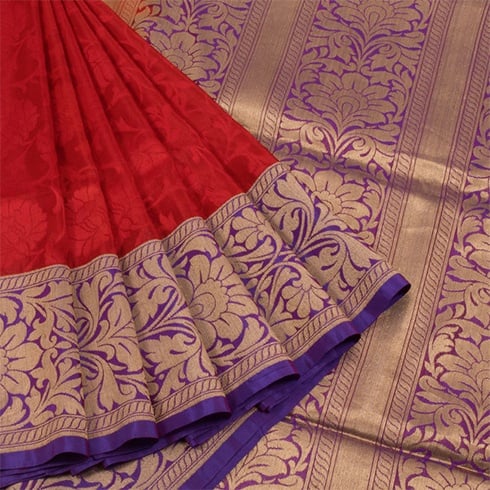
Source: avishya.com
2. Garad Silk: Heard of this rich silk from West Bengal? It is distinguished by its red border and small paisley motifs.
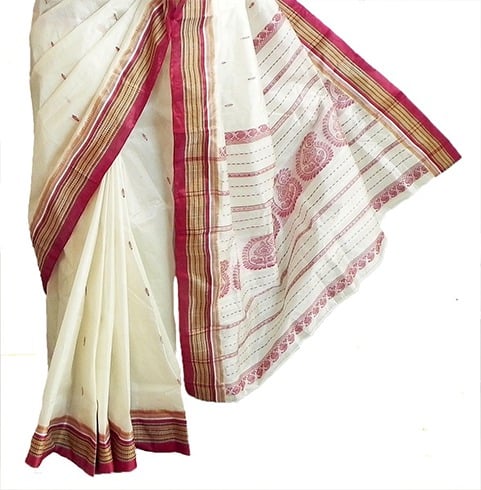
Source: dollsofindia.com
3. Jamawar: Jamawar silk is not 100% silk. It is made with a blend of cotton and wool. This one of the most popular types of silk in India that is also used for weaving shawls.
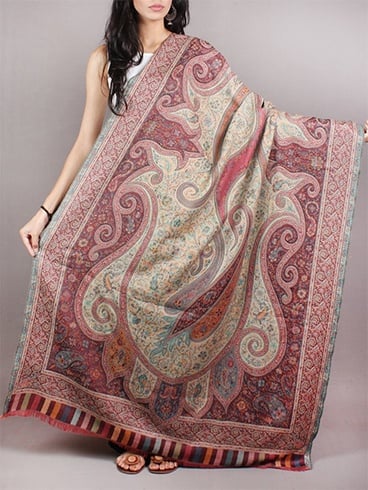
Source: indubindu.com
4. Matka Silk: The waste Mulberry silk is not thrown away but used to make a rough handloom silk – the Matka Silk. In doing so, no gum (sericin) part is removed. Matka silk is largely produced in Karnataka and Kashmir.
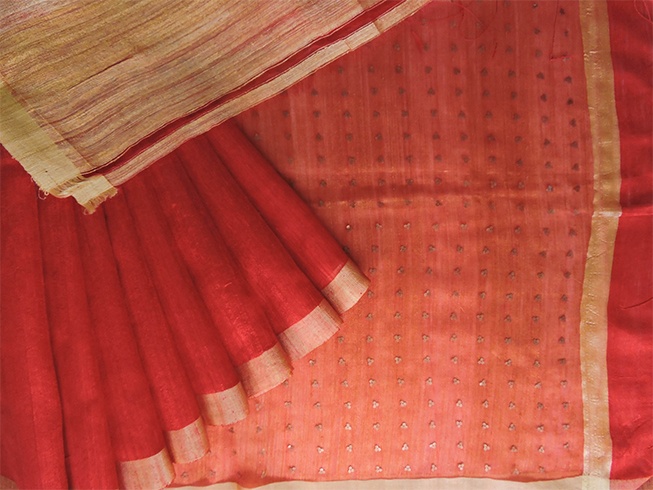
Source: artison.in
5. Banarasi/Benarasi Silk: FINE SILK from the lands of Benaras or Varanasi, Banarasi silk stands out for its gold and silver brocade work and zari on the fabric.
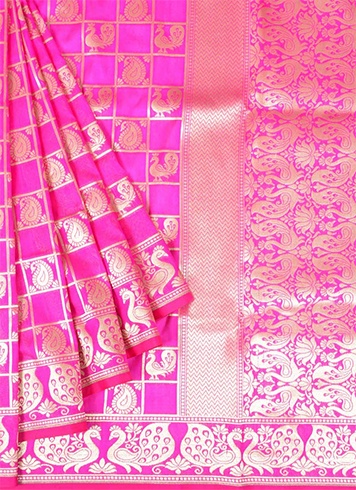
Source: cbazaar.com
6. Murshidabad Silk: This silk is produced at the ‘Silk Mecca’ of East India.
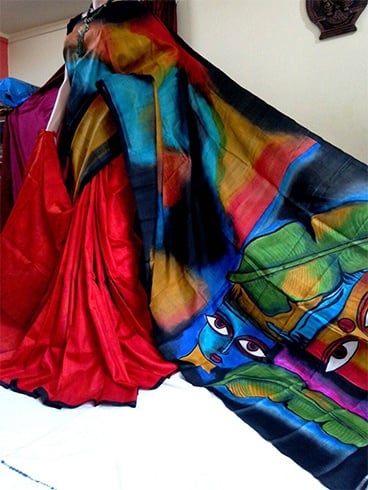
Source: glowroad.com
7. Bangalore Silk: This is the most wearable and popular version of the traditional silk fabric. As its name suggests this rich material traces its roots to the IT hub.
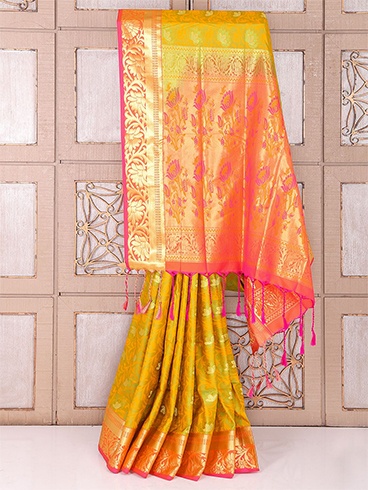
Source: g3fashion.com
8. Angora Silk: The Angora silk yarn known for its tender texture is made from the fur of the meek ‘Angora’ rabbit.
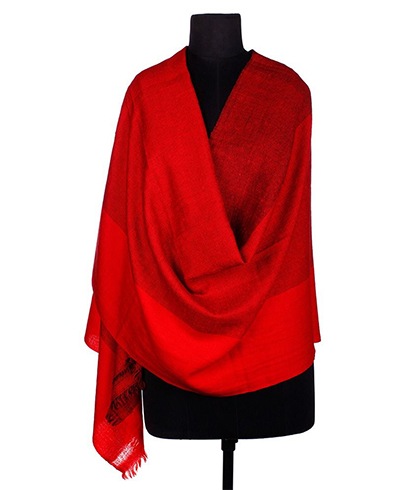
Source: snapdeal.com
9. Silk Embroidery: Sounds fab! With intricate patterns embroidered in silk on various fabrics.
10. Pochampally/Pochampalli Silk: This is one of the richest types of silk in India. The handloom traces its roots to Boodhan Pochampally, the silk city of India.
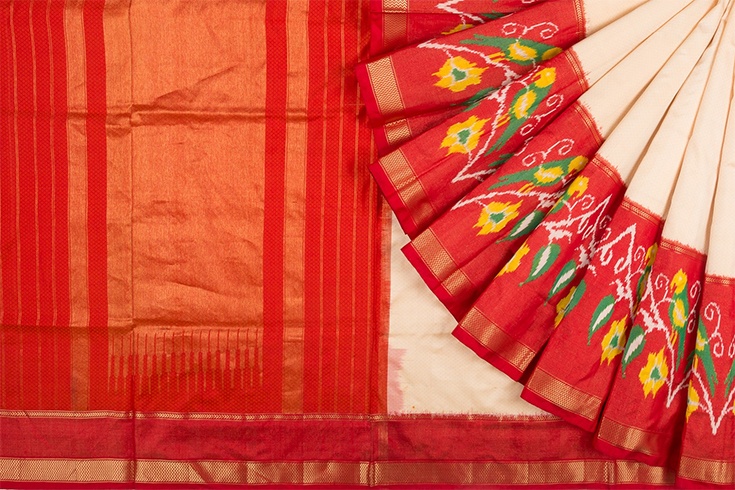
Source: kankatala.com
11. Mysore Silk Crepe: Hails from the silk city of Mysore in Karnataka. Mysore Silk Crepe is woven from hard spun silk yarn.
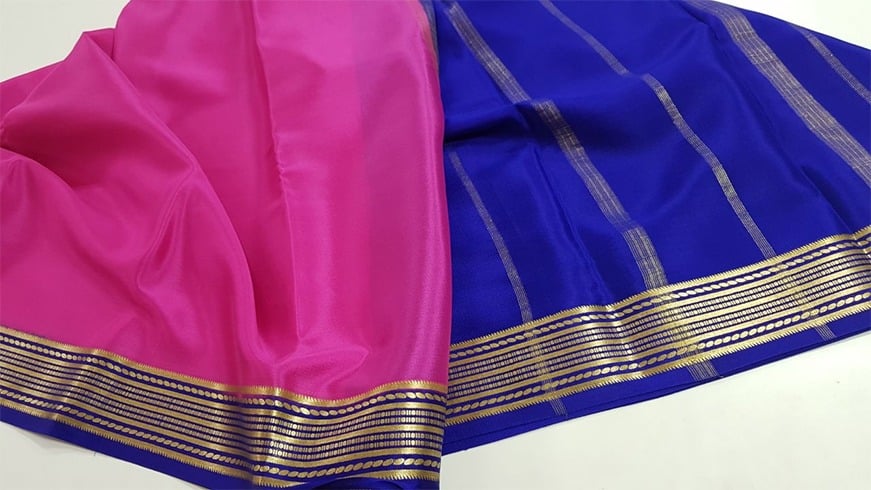
Source: facebook.com/nandinigrgladiesboutique
12. Sournachuri Silk: Belonging to West Bengal, Sournachuri Silk uses a gold thread for silk weave. Which is why you get to witness a rich shine in the silk fabric. The Sournachuri Silk is also known as the ‘illustrious’ sister of the Baluchari silk saree.
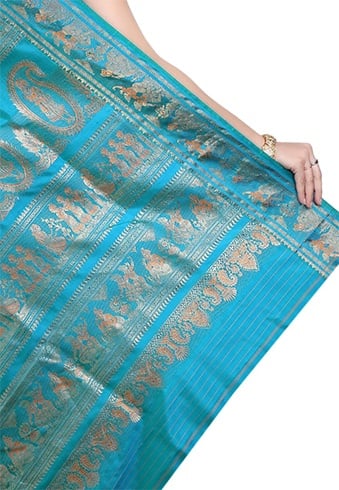
Source: utsavfashion.in
13. Raw Silk: Meet the delicate fiber of silk in the most natural form. There is no twist and this unprocessed silk form can be easily woven into different fabrics.
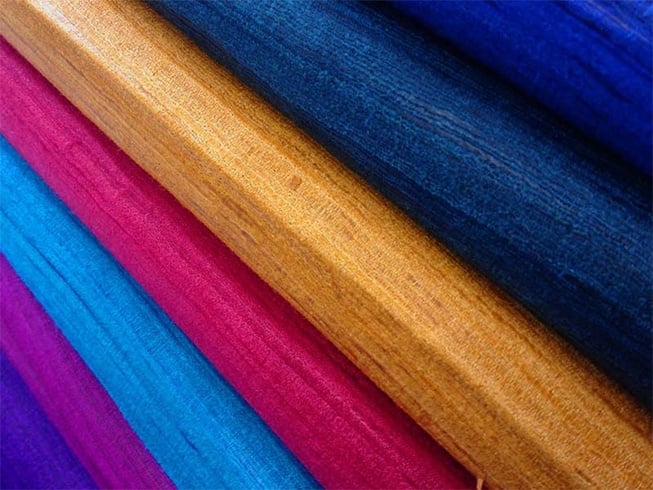
Source: exportersindia.com
14. Kosa Silk: This is one of the best types of silk in India from Chattisgarh (Kosa is a kind of Tussar Silk). It stands out for its soft texture and dull-brownish look. It is available in various shades – gold pale, dark honey, cream, etc.
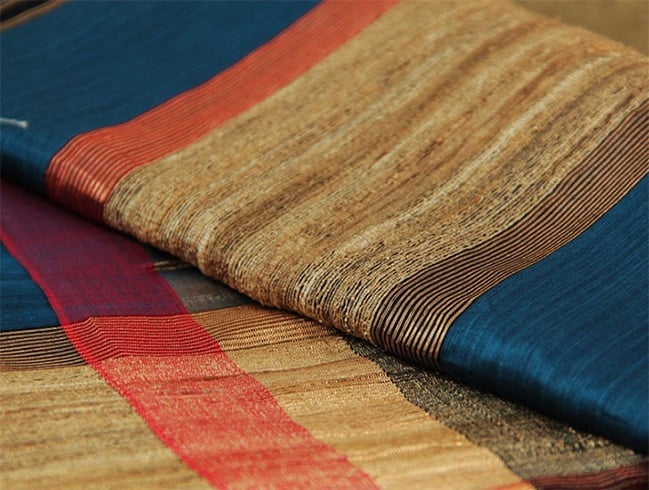
Source: shatika.co.in
15. Dharamavaram Silk: Known as ‘Silk for the Bride’, the Dharamavaram silk from Andhra Pradesh is also known for its gold-plated borders.
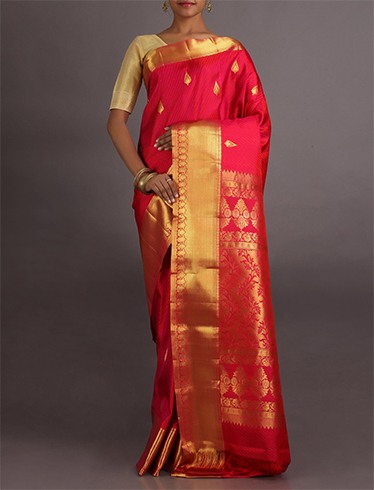
Source: shatika.co.in
16. Narayanpet Silk: The hallmark chequered pattern and temple border add to the traditional appeal of this drape which too has Southern roots.
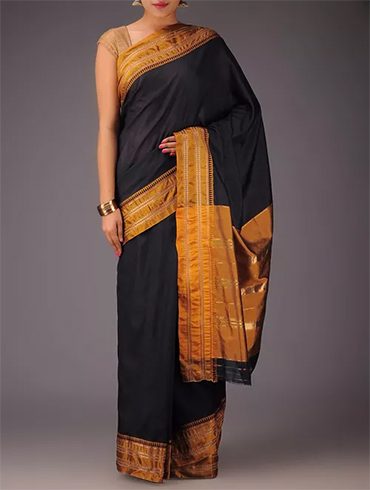
Source: jaypore.com
17. Pat/Paat Silk: Pat silk, produced in Eastern India, is known for its brilliant white or off-white shades, distinctive brightness, high quality and durable nature.
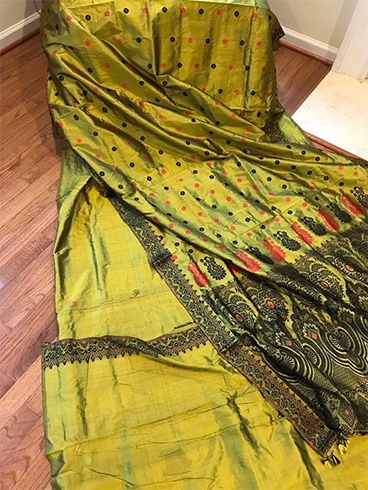
Source: srilathacollections.com
18. Cot Silk: Good combination of cotton and silk, Cot silk is a cheaper and adulterated version of silk.
[sc:mediad]
19. Kanchipuram Silk: There is a village called Kanchipuram in Tamil Nadu which boasts of producing one of the best qualities of silk in the country. Kanchipuram silk is known for its shine and durability.
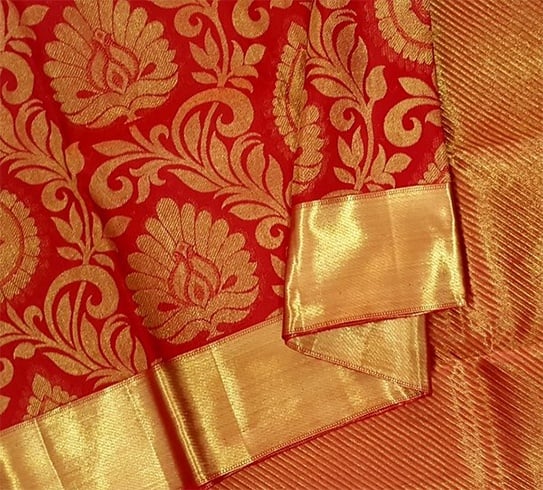
Source: templeofkanchi.com
20. Bhagalpuri Silk: The ‘Queen of all fabrics’ – the Bhagalpuri Silk is one of the most affordable types of silk in India and is known for its unique and superior quality.
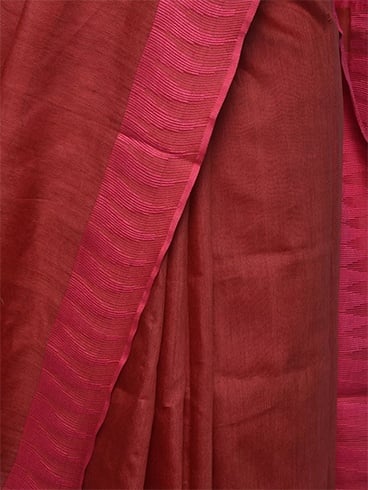
Source: theloom.in
21. Uppada Silk: Belonging to Andhra Pradesh, Uppada silk is also known as Uppada Pattu (meaning Silk in Telugu). It is usually woven in the cotton warp and is known more by the length and breadth and the count of threads.
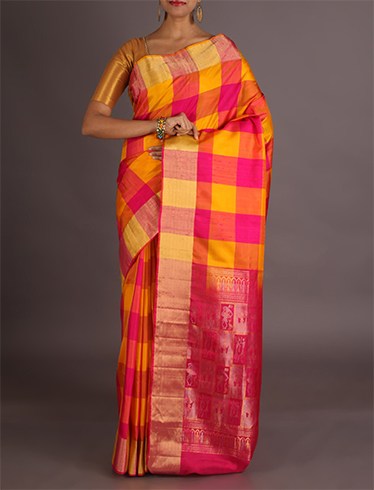
Source: shatika.co.in
22. Art Silk: This name is the short form of artificial silk. Made with the rayon fiber this is a pocket-friendly version of the rich silk fabric.
Points To Remember While Choosing Silk:
The tall task it is when it comes to choosing silks. These are the different points which you need to make a note of when purchasing any silk or silk fabric.
- The Weight
- The Elasticity
- The Durability
- The Texture
- The Insulation
- The Aesthetic
I hope you enjoyed reading about the types of Silk. Hope it gave you an in-depth knowledge of the types of silk in India.
